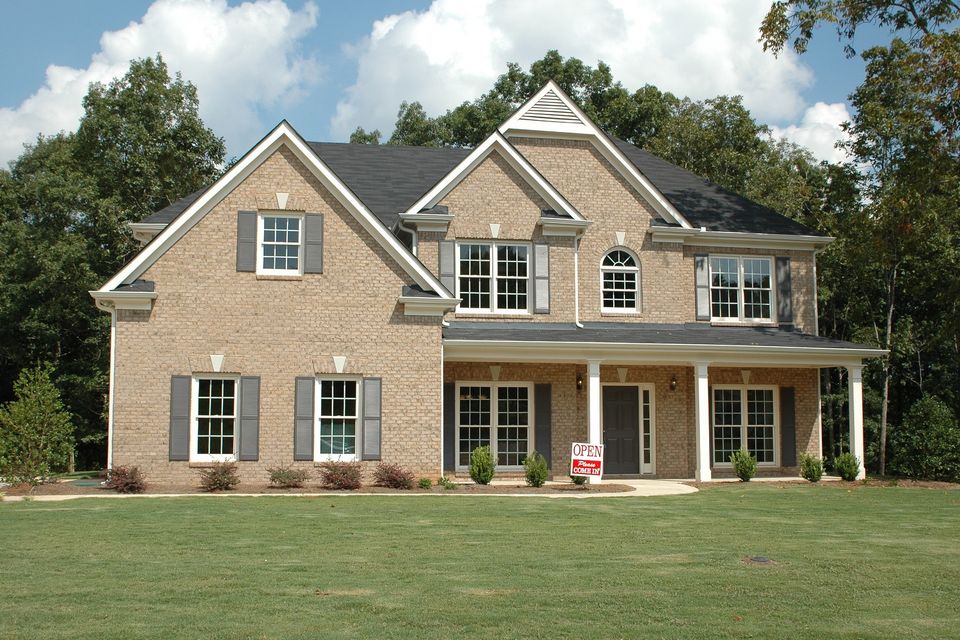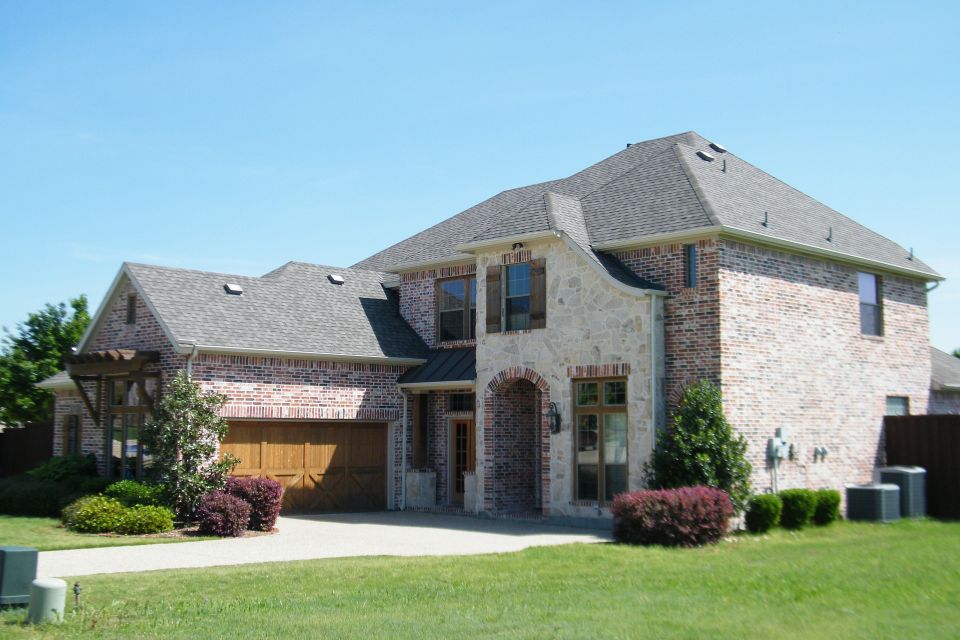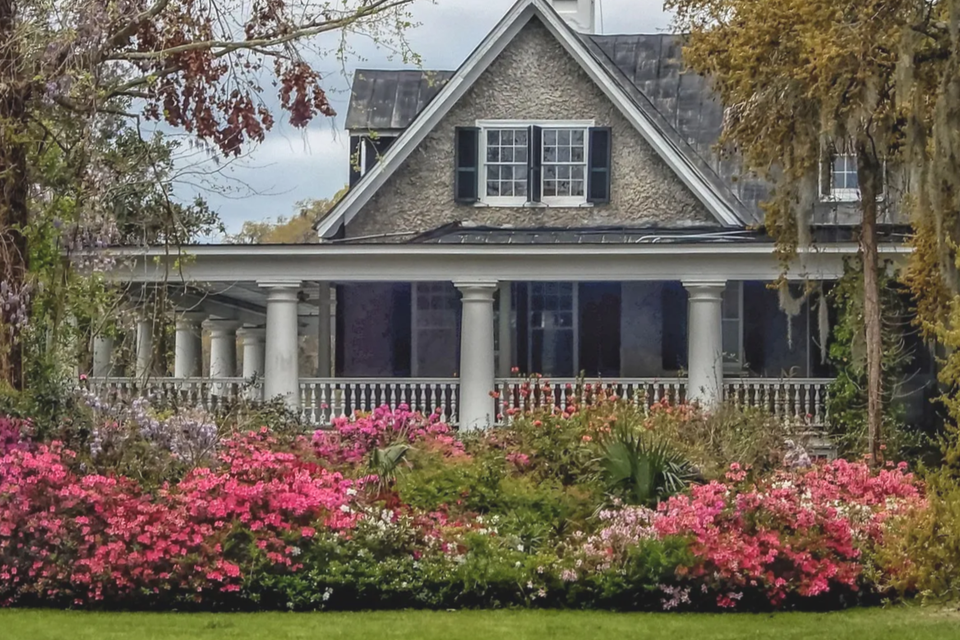
Properly Maintaining Your Home's Landscaping
Maintaining your home's landscaping not only enhances the aesthetic appeal of your property but also contributes to its overall value and creates a welcoming environment. Here are some tips to help you keep your landscaping in top shape:
Watering: Water your lawn and plants deeply but infrequently, preferably in the early morning or late afternoon to minimize evaporation. Use a soaker hose or drip irrigation system to deliver water directly to the roots.
Weeding: Routinely remove weeds from your lawn and garden beds to prevent them from competing with your plants for water and nutrients. Consider using mulch to suppress weed growth and conserve soil moisture.
Fertilizing: Apply fertilizer to your lawn and plants as needed to promote healthy growth. Choose a fertilizer formulation that matches the specific needs of your plants and follow the application instructions carefully to avoid over-fertilization.
Pruning and Trimming: Trim shrubs, hedges, and trees to maintain their shape and encourage new growth. Remove dead or diseased branches to improve the overall health and appearance of your landscape.
Mulching: Mulch garden beds to suppress weeds, retain soil moisture, and regulate soil temperature. Organic mulches, such as wood chips or shredded bark, also decompose over time, adding nutrients to the soil.
Pest and Disease Control: Monitor your plants for signs of pests or diseases and take appropriate action to control infestations. This may involve using insecticidal soaps, horticultural oils, or other eco-friendly pest control methods.
Seasonal Maintenance: Adjust your landscaping maintenance routine based on the season. In the spring, focus on lawn renovation, planting, and fertilizing. Summer maintenance involves regular watering and monitoring for pests. In the fall, prepare your landscape for winter by raking leaves, aerating the soil, and applying a winterizer fertilizer.
Hardscape Maintenance: Don't forget to maintain hardscape features such as pathways, patios, and retaining walls. Clean surfaces regularly to prevent moss and algae buildup, and make any necessary repairs to ensure structural integrity.
Professional Assistance: Consider hiring a professional landscaper. We at Professional Landscaping Service are the right choice company for tasks that require specialized knowledge or equipment, such as tree trimming, irrigation system installation, or landscape design.
By following these tips and staying proactive with your landscaping maintenance, you can create a beautiful and enjoyable outdoor space that enhances your home's curb appeal and value.

Creating an Individual Landscaping Theme for Your Unique Home
Designing a personalized landscaping theme for your home is an exciting endeavor! Here's a step-by-step guide to help you create a cohesive and unique landscaping theme:
Assess Your Home and Surroundings: Take a good look at your home's architecture, the surrounding environment, and any existing landscaping features. Consider factors such as the size of your yard, climate, soil type, and sun exposure.
Define Your Style: Think about your personal preferences and the style of your home's interior. Do you prefer a modern, minimalist look, or are you drawn to a more rustic, natural aesthetic? Your landscaping theme should complement the overall style of your home.
Research Inspiration: Look for inspiration from landscaping magazines, websites, and social media platforms like Pinterest or Instagram. Save images of gardens, plants, and outdoor spaces that resonate with you.
Choose a Theme: Based on your style preferences and the existing elements of your home and yard, choose a theme for your landscaping. Some popular themes include:
- English Cottage Garden: A charming and romantic style characterized by lush, overflowing flower beds, winding pathways, and cozy seating areas.
- Desert Oasis: Ideal for arid climates, this theme incorporates drought-tolerant plants, gravel or sand pathways, and decorative succulents and cacti.
- Tropical Paradise: Create a lush, tropical retreat with bold foliage plants, palm trees, exotic flowers, and water features like a small pond or fountain.
- Japanese Zen Garden: Achieve tranquility and balance with simple, clean lines, carefully placed rocks, gravel or sand raked into patterns, and minimalist plantings like bonsai trees and bamboo.
- Modern Urban Oasis: Embrace sleek, contemporary design with clean lines, geometric shapes, and minimalist plantings. Incorporate features like a patio with concrete pavers, raised planters, and architectural elements like sculptures or water features.
Select Plants and Materials: Choose plants and materials that fit your chosen theme and are well-suited to your local climate and growing conditions. Consider factors such as color, texture, height, and bloom time when selecting plants. For materials such as paving stones, mulch, and decorative elements, opt for options that complement your theme and provide visual cohesion.
Create a Layout Plan: Sketch out a rough layout of your landscaping design, including the placement of plants, pathways, seating areas, and other features. Consider the flow of movement through the space and how each element interacts with the others.
Implement Your Design: Once you have a clear plan in place, it's time to start implementing your landscaping design. Start by preparing the soil, installing any hardscape elements like pathways or patios, and then plant your chosen vegetation. Take your time and pay attention to detail to ensure a polished final result.
Maintain and Evolve: Regular maintenance is key to keeping your landscaping looking its best. Water, prune, and fertilize your plants as needed, and keep pathways clear of debris. As your garden matures, don't be afraid to make adjustments and additions to your design to keep it fresh and interesting over time.

Guide to Landscaping Design & Style
Introduction
Although people often think about how they can make their houses, yards, gardens, or other areas more beautiful and attractive, they sometimes don’t know exactly how to start the process of landscaping or where they can find creative designs.
Maybe they need a bit of inspiration or simply just the right guidance to start the process. That’s the reason why we decided to provide you with information about this topic and give you some advice about designs and styles of landscaping. So, what are you waiting for? Read this article and discover some suggestions and creative ideas that may help you to plan your landscaping properly.
What Is Landscaping
Landscaping is a modification of a location’s natural surroundings to give it a certain appearance. Some people think that this field focuses on only gardening, however, landscaping also involves the construction of houses, facilities, and the evaluation of the entire area. There are many reasons why people are motivated about landscaping. Some of them simply have a desire to make some areas more attractive or make a space useful for recreation.
A landscaper typically begins a project by drawing the building and its surroundings, after that evaluating the natural environment and nearby structures. Landscapers can begin to consider design once they have a plan of the area to be landscaped. If you decide to create a landscaping design on your own, keep reading and find out how to plan it properly.
Landscaping Design Planning Guide
Garden landscaping is achievable on the budget, Using the right materials, planting strategies, and landscaping techniques, create a beautiful and fascinating outdoor area that suits your needs and enhances your yard year-round. follow this article and find out what you have to do to get the best results.
Carefully Consider Your Site and Design
The first crucial step is to understand the place that you are working with, it is a very important part that you should have mostly covered while planning your garden design. The main aim of this step is to identify any problems so that you can plan your efforts and resources properly. Doing this will automatically save you money and time.
You have to consider if there is any rubbish, existing planting, or features and structures to remove. You should fully understand ground and topsoil conditions to start your landscaping process properly.
Who will be using your area?
It is essential to think about who will use your yard. Will kids be playing in your area? Do you own animals? Do you intend to host outdoor events in your house? Keep in mind that you can use hardscapes and strategic plantings to divide your landscape into separate areas for different purposes and people can move from one location to another via walkaways.
Clear The Area
Before you start the working process, you have to clear your site, this means getting rid of the weeds naturally, another option is to use one of the best weed killers.
Visible trash is simple to remove, but if the soil is compressed try to use a pick or garden rake. This can be a difficult process, but it is required especially if you intend to create a kitchen garden and have a large planting plan.
Level the ground
This is an essential part since landscaping components like patios and decks cannot be installed on uneven ground. You might be able to level ground yourself if you have a small garden area. Large soil chunks can be broken up with teeth. You might think about hiring a professional (Call us!) if you have a large area with heavily compacted soil. A little height change can help a small yard or garden appear larger but sloped grass is not suggested because it can rapidly become harmful and ugly. The best approach to deal with a sloped garden is definitely through terracing.
Plan Your Planting
This part is a very enjoyable and fun process. Naturally, the sort of garden plants you select will depend on your preferences, the local climates, and the general atmosphere that you want to create in your area. Furthermore, it is important to consider the type of soil you have in your garden.
We have to mention that not forget to consider how your landscape plans will change as time goes on. When you choose a plant, you should get information about its growth rate, needs, and mature sizes. Make sure your plants have adequate space to grow to their full size. Also, take into account that your landscape’s particular conditions have a big effect on the size of your plants.
Consider Climate
If you live in a dryer area or prefer to plant in a more low- maintenance and environmentally friendly way. You can combine Xeriscaping with your landscaping methods for less watering and beautiful results. When you work with your garden, it is essential to consider aspects like soil type and temperature. The interesting thing about this Xeriscaping method is that it is not just for dry climates and also you don’t need lots of plants to make a difference.
Dress your landscape
This is the time to finish up details like water features, ponds, and swimming pools. Additionally, this is a time to begin filling raised beds for growing vegetables and other things. When that happens, you can prepare the lawn or if you want, spread grass around it, so it can grow.
Landscaping Styles
The entire look and feel of your home are greatly influenced by landscaping. Your yard should be a location where you may go to relax from the outside world, depending on the landscaping design you select. Before selecting the design, consider long term-objectives such as creating your yard for kids, sustainability, entertainment, or relaxation. Below We suggested so many styles of Landscaping that you might be interested in.
Woodland
Consider a forest landscape design, if a cozy cottage is your idea of the perfect escape. With little to no human intervention. forest trees, different kinds of plants, and flowers will flourish in their own time.
Traditional options like Oak, Maple, and cherry require a longer time to grow and are an extremely long investment. These kinds of trees hibernate in the winter, so consider how your landscape will look throughout the year. However, trees including Cedar, Juniper, Pine, and Spruce are the type of softwoods and they require little time to grow and keep their winter cover in the winter season. So, if you want to feel woodland and create an atmosphere of wood, you also should consider some structural improvements like wooden seats, stone walkways, and decorative birdhouses.
English Garden Design
One of the most fascinating designs of landscaping is the English garden style. It is also called an English cottage or countryside. This style makes you think of spending the summer in your grandmother’s house in Kent, a place also famous as the “Garden of England”. This style of landscaping changed people’s view of nature, instead of fear, they respect and appreciate it.
A body of water is a typical English garden feature, along with shrubbery, flowers, and trees. This could be a lake or pond, maybe man-made or natural, traditional accompaniments of this design are a bridge, a bench, and a birdbath.
Japanese Garden
The purpose of the Japanese garden is to provide a place for quiet contemplation. This landscape design uses four key elements to create spiritual heaven: rocks, water, plants, and ornaments. It takes inspiration from Buddhist, Shinto, and Taoist teachings.
Water components of Japanese gardens typically include waterfalls, koi ponds, and stone basins. A bridge is also part of this style of design.
Furthermore, Bamboo is a great material for traditional Japanese gardens, it is the best choice if you want to make a place for quiet reflection. do not forget some essential accessories to bring your landscaping design to life.
French
The main key of the French garden is symmetry. After the influence of the Italian renaissance, the French garden design developed, which has several renaissance garden elements but also has unique features and components like fountains, natural stone, columns, simple and elegant furniture, antiques, and pea gravels. The famous French plants that you will find in most French gardens are Lavender, Rosemary, boxwood, and Lily. It is widely known that the French style always leaves an extravagant and fascinating impression on visitors.
Prairie
If you like landscapes without big trees, think about re-creating a prairie with tall grasses and Herbaceous blooming plants. Switchgrass has greens, browns, and sometimes even a little purple or red. It is native to the southwest United States. It can adapt to most climates because it has evolved in a variety of habitats.
Switchgrass is a fantastic alternative if you live in a region with little rainfall because it is also drought resistant.
Bottom Line
The planning process of landscaping is challenging for some people but we believe this article gives you a deep inside knowledge about the styles and designs of landscaping, and that will help you to make your gardens, houses, and other areas more beautiful and fascinating. We know that it is difficult to follow every step and consider every situation. Therefore, if you want to make a beautiful garden and are afraid that you will miss something, Pro cut Lawn & Landscaping company can help you in every step of the way to make your dream garden come true.
